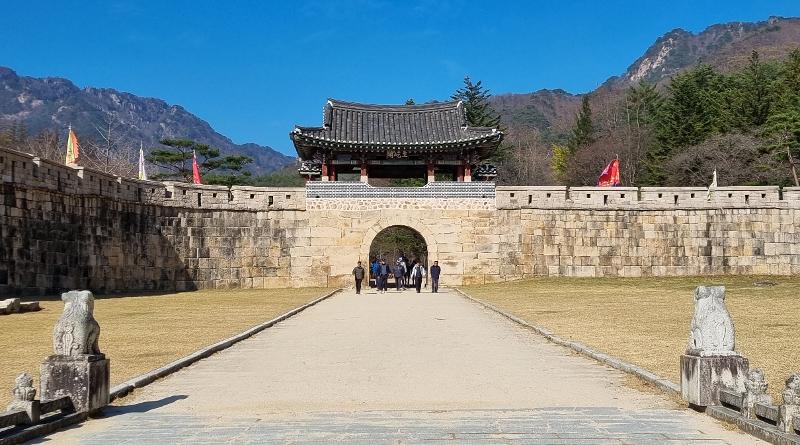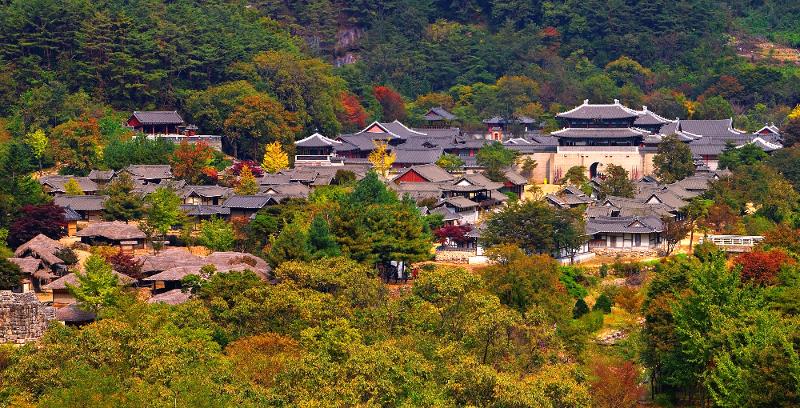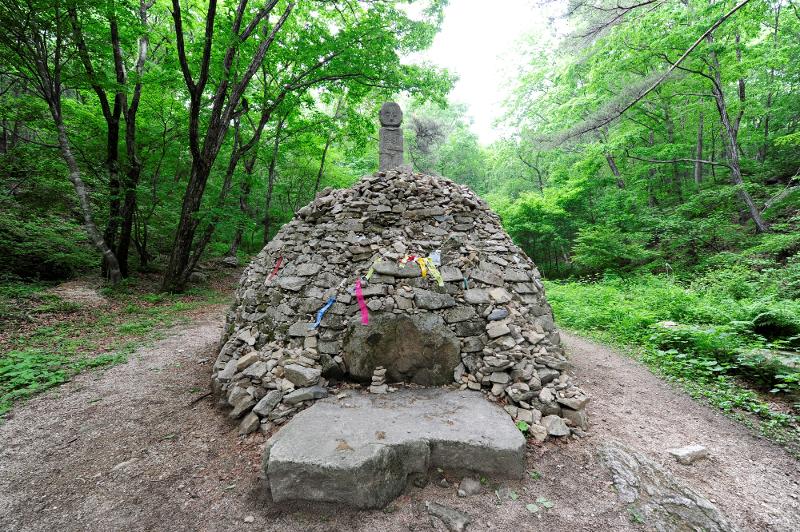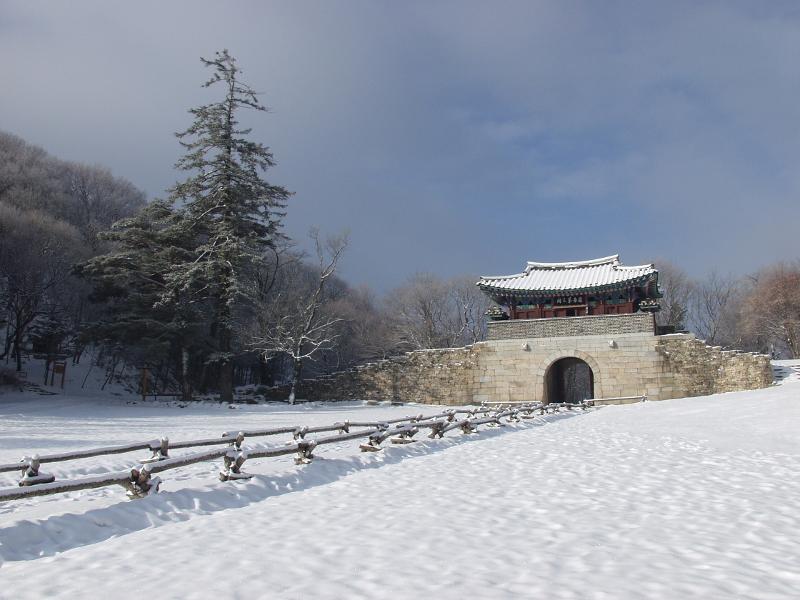문화체육관광부는 문화매력100선(로컬100)을 통해 각 지역 명소, 콘텐츠, 명인 등을 소개하고 지역 문화의 가치를 홍보하고 있다. 코리아넷은 로컬100 중 외국인이 가보면 좋을 숨겨진 명소를 소개한다.
The Ministry of Culture, Sports, and Tourism has a list of 100 cultural attractions dubbed Local 100 featuring each region's hot spots, content, and cultural experts to promote the value of regional culture. This Korea.net series explores select places from Local 100 recommended for foreign visitors.

조선 제1대 왕인 태조 이성계(1392-1398)는 수도인 한양(현 서울)을 중심으로 전국을 연결하는 도로망을 정비했다. 그중 동래(현 부산광역시)와 한양을 최단거리로 잇는 약 377km 길이의 구간은 영남대로라 불렸다.
King Taejo Yi Seong-gye, the founder and first king of the Joseon Dynasty who ruled the country from 1392-98, developed a road network connecting the country centered on Hanyang, the name of the capital Seoul at the time. One such path was the 377 km-long Yeongnamdaero, the shortest route between Dongnae (now Busan) and Hanyang.
영남대로상 가장 높고 험한 고개가 문경새재다. 충북 괴산군과 경북 문경시의 경계에 위치한 해발 1,026m의 조령산과 문경시에 위치한 1,039m 주흘산 사이 계곡을 따라 놓인 문경새재는 해발 642m의 고갯길이다. 조선시대 영남 지방 선비들이 한양으로 과거 시험을 보러 가기 위해 지나다닌 고개로 잘 알려져 있다.
The highest and steepest hill on Yeongnamdaero is Mungyeongsaejae Pass. The latter is a 642 m-high hill in the valley between Joryeongsan Mountain (1,026 m above sea level), which is on the border between Goesan-gun County, Chungcheongbuk-do Province, and Mungyeong, Gyeongsangbuk-do Province, and Juheulsan Mountain in Mungyeong (1,039 m). The pass is well-known as the way through which scholars from Yeongnam, a region traditionally comprising the two Gyeongsang-do provinces and the metropolitan cities of Busan, Daegu, and Ulsan, went through toward Hanyang to take the civil service exam during the Joseon Dynasty.
선비들이 문경새재를 거친 이유는 한양까지 가장 빠른 시간인 14일만에 가기 위해서도 있었지만 문경이 들을 문(聞), 경사 경(慶)으로 기쁘고 경사스런 소식을 들을 수 있는 곳을 의미하기 때문이기도 했다. 문경새재를 '장원급제길'이라 부르기도 한 이유다.
The reason scholars passed through the pass was not only to reach Hanyang in the fastest period of 14 days but also because the Hanja (Chinese character) for mun means "to hear" and that for gyeong "an auspicious occasion." Mungyeong thus referred to as "the road of jangwongeupjae," or passing the civil service exam.

▲ 경북 문경시 문경새재 제1관문 주흘관. Juheulgwan Gate is the No. 1 gate at Mungyeongsaejae Pass in Mungyeong, Gyeongsangbuk-do Province. (아흐메트쟈노바 아이슬루 기자 aisylu@korea.kr - Aisylu Akhmetzianova)
코리아넷은 지난달 14일 경북 문경시 문경새재도립공원을 찾았다. 공원 입구에 다다르자 문경새재를 대표하는 세 개 관문 중 제1관문인 주흘관이 보였다. 제1관문이지만 제2관문(조곡관) 보다 이후에 만들어졌다. 임진왜란(1592-1598) 중인 1594년 왜군을 막기 위해 제2관문이 가장 먼저 설치됐고 군사적 요충지로 인식되어 1708년 제1관문과 제3관문(조령관)이 차례로 축조됐다.
A Korea.net staff writer on Nov. 14 visited Mungyeongsaejae Provincial Park in Myungyeong. Juheulgwan Gate, the first of the hill's three representative entryways, was visible upon arrival at the entrance.
While it was the No. 1 gate, Juheulgwan was built after No. 2 Jogokgwan, which was built in 1594 for protection during the 1592-98 Imjin War, or a series of Japanese invasions of the Korean Peninsula. Jogokgwan was perceived as a strategic military point, thus the first and third (Joryeonggwan) gates were built sequentially in 1708.
제1관문 옆에는 성황당이 있다. 문경새재를 수호하는 성황신을 모시는 이곳은 1700년경 건립되어 여러 차례 보수했다는 기록이 전해진다. 이날 동행한 정희열 해설사는 "지난 10월 주흘산 산신제 및 아씨 성황제가 열린 곳"이라고 설명했다.
Located next to Juheulgwan is the shrine Seonghwangdang, which was built in 1700 to worship the shamanistic deity Seonghwang, the supposed guardian of Mungyeongsaejae. The facility is said to have been renovated several times after its establishment.
Guide Jung Hee-yeol, who accompanied the Korea.net writer on her visit, said, "This is where festivals for the Juheulsan Mountain and Seonghwang gods took place in October this year."

▲ 경북 문경시 문경새재도립공원에 위치한 문경새재 오픈세트장 전경. This is the open film set at Mungyeongsaejae Pass of Mungyeongsaejae Provincial Park in Mungyeong, Gyeongsangbuk-do Province. (문경시 - Mungyeong City Hall)
제1관문에서 제2관문까지 걸으면서 볼 수 있는 주요 볼거리로는 드라마 '태조 왕건'(2000)을 비롯해 '무인시대'(2003), '해를 품은 달'(2012), '킹덤'(2019) 등의 촬영지로 유명한 문경새재 오픈세트장과 과거 술집, 식당, 여관을 겸한 '주막'이 있다. 영남대로의 주요 구간인 문경새재는 많은 사람들이 오고다녀 주막촌이 성행한 곳으로도 잘 알려져 있다. 정 해설사는 "조선시대에 새재길을 넘나들던 사람들이 여행의 피로를 풀고 쉬던 장소"라고 소개했다.
As the writer walked from the gates Juheulgwan to Jogokgwan, she saw the open film set of Mungyeongsaejae, which is famous as the filming site for hit historical K-dramas such as "Taejo Wang Geon" (2000), "Age of Warriors" (2003), "The Moon Embracing the Sun" (2012) and "Kingdom" (2019).
Along the path was also jumak, which served as a bar, restaurant, and inn. Mungyeongsaejae, a major area of Yeongnamdaero, is renowned as a place with a prosperous jumak village and a high floating population. Jeong said, "This is where people using Saejae roads during the Joseon Dynasty relaxed and relieved fatigue from their trips."
제2관문을 지나 장원급제길을 따라 걷다보면 2m 가량의 돌무더기인 '책바위'가 시선을 사로잡는다. 3년간 자신의 집터를 둘러싼 돌을 옮겨 쌓은 뒤 기도해 아들이 건강을 되찾고 장원급제를 했다는 전설을 가진 돌탑이다. 정 해설사는 "이런 전설 때문에 조선시대에 과거를 보러 가던 선비들이 돌을 올리고 장원급제의 소원을 빌었다"며 "지금까지도 많은 사람들이 합격 기원과 소원 성취 기도를 한다"고 설명했다.
The writer passed by Jogokgwan and walked along the road of jangwongeupjae until reaching chaekbawi (book rocks), a 2 m-high pile of rocks that caught her eye. The legend surrounding the stone pagoda is that a woman moved and piled the rocks around her house for three years and prayed. Her son eventually recovered his health and passed the civil service exam with the highest grade.
"Because of this legend, scholars in the Joseon era who took the civil service exam piled up rocks and prayed to pass the test," Jeong added. "Even to this day, many people pray here for luck to pass exams or get their wishes fulfilled."

▲ 경북 문경시 문경새재 책바위. These are chaekbawi (book rocks) on Mungyeongsaejae Pass in Mungyeong, (문경시 - Gyeongsangbuk-do Province).
문경새재 가장 높은 곳에 자리잡은 제3관문에서 지나온 길을 내려다보면 백두대간 자락이 펼쳐진다. 정 해설사는 제3관문이 "북쪽에서 침입하는 적을 막기 위해 만들어 졌다"며 "문경새재는 고려 초부터 중요한 교통로 역할을 한 곳"이라 말했다.
Walking out of Joryeongwan at the highest point on Mungyeongsaejae and heading down the pass previously traveled through brings one to the foot of the mountain range Baekdu Daegan. "(Joryeongwan) was built to block invasion by enemies from the north," Jeong said. "Mungyeongsaejae Pass was a place that played a crucial role in transportation from the early Goryeo Dynasty."
제1관문부터 제3관문까지 거리는 총 6.5km로 편도 2시간 정도가 걸리는 코스다. 제2관문까지는 신발을 벗고 걷는 사람이 보일 정도로 부드럽고 완만한 황톳길이지만 제2관문부터 제3관문까지는 경사가 가파르다. 정 해설사는 문경새재에서 "산책부터 트레킹까지 다양하게 즐길 수 있다"며 "사계절 내내 다양한 볼거리와 즐길거리를 선사하는 곳"이라고 덧붙였다.
The 6.5-km walk from Juheulgwan (No. 1 gate) to Joryeongwan (No. 3) takes about two hours one way. The path to Jogokwan (No. 2) is a smooth and slow red clay road that has people even walking with their shoes off on it. Yet the slope from Jogokgwan to Joryeongwan is steep. "You can enjoy various strolls and treks (at Mungyeongsaejae Pass)," Jeong said. "This place offers diverse things to see and enjoy throughout all four seasons."

▲ 경북 문경시 문경새재 제3관문 조령관. Joryeongwan is the No. 3 gate of Mungyeongsaejae Pass in Mungyeong, Gyeongsangbuk-do Province. (문경시 - Mungyeong City Hall)
문경새재 가기 전 알아두면 좋은 정보 - Tips for visiting Mungyeongsaejae Pass
# 문경새재도립공원은 서울에서 시외버스를 이용하는 것이 가장 편리하다. 동서울종합터미널에서 문경버스터미널까지 약 2시간 걸린다. (하루 11회 운행)
The most convenient way of getting there from Seoul is by taking an intercity bus to Mungyeongsaejae Provincial Park. The ride from Dong Seoul Terminal in Seoul to Mungyeong Bus Terminal takes about two hours, with 11 buses running the route daily.
# 문경새재도립공원은 입장료가 무료이며 문경새재 오픈세트장은 2000원이다.
Admission to the park is free, while entry to the open film set where K-dramas were filmed is KRW 2,000.
# 문경새재도립공원은 방문객을 위한 전동차 서비스를 제공한다. 자세한 정보는 문경시 누리집 (https://www.gbmg.go.kr/tour/contents.do?mId=0101010100)을 통해 확인할 수 있다.
The park offers electric vehicle service to visitors. More information is available on Mungyeong City Hall's official website (www.gbmg.go.kr/tour/contents.do?mId=0101010100).
문경 = 아흐메트쟈노바 아이슬루 기자 aisylu@korea.kr
By Aisylu Akhmetzianova, aisylu@korea.kr



.jpg)





0 comments: